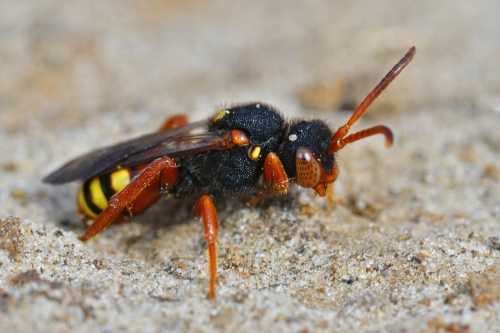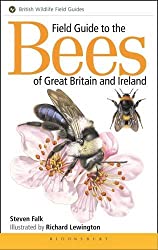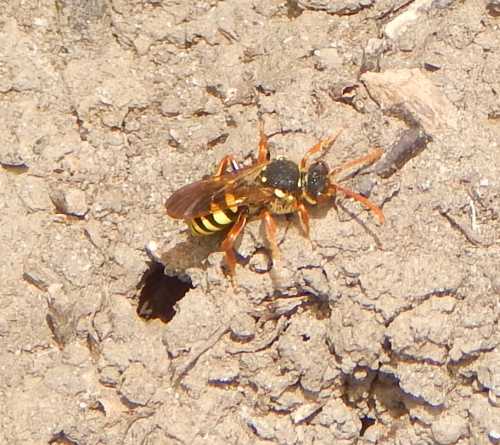Dusky-horned Nomad Bee, Nomada bifasciata
When the renowned entomologist, Steven Falk wrote Field Guide to Bees Of Great Britain And Ireland, publishing the work in 2015, he described the appearance, foraging preference, target host and habitat of 34 known Nomada species in the British Isles.
A few years later, two new arrivals were noted, the Dusky-horned Nomad Bee, Nomada bifasciata, and the Large Bear-clawed Nomad Bee, Nomada alboguttata.
Falk published a paper in 2019 with fellow entomologist, Rosie Earwalker, describing Nomada bifasciata in the British Journal of Entomology & Natural History1.
About The Dusky-horned Nomad Bee, Nomada bifasciata
Females of this species are similar to Nomada fucata, but they are larger. Both species have a yellow sot on the scutellum, which is a section of the thorax (upper body). In the photograph below providing a side view, this yellow spot is just visible close to the 'waist' of the bee.
 Dusky-horned nomad bee Nomada bifasciata
Dusky-horned nomad bee Nomada bifasciataHowever, Nomada bifasciata females are also notably darker than Nomada fucata, with a conspicuous pile of black hair on the head and thorax. Males are more similar to Nomada fucata than females.
The antennae of Nomada bifasciata are extensively red or yellow, as opposed to black, with some Nomad bee species.
As a Nomad species and member of the Apidae bee family, this species is grouped within the long-tongued category.
Habitat and locations
At the time of writing, this species has only been observed in the South East of England around coastal areas and country parks, particularly in Kent.
Target host species
Nomad bees are cleptoparasites which target one or more host species, often in the Andrena (mining bee) genus.
Upon finding a suitable host nest, the nomad species, enters, lays an egg and then leaves. The egg develops into a larva which destroys the offspring of the host, and eats the food provisions.
The target host of this species is Andrena gravida, the White-bellied Mining Bee, which is another recent arrival in the British Isles, which has similarly been found in Kent. It requires spring blossoms for food, and is known to visit trees of the Salix (willow) and Prunus genus (plum), and may be found in commercial orchards where suitable nest habitats are also found.
References
1. Falk, S, Earwaker, R (2019). Dusky-horned Nomad Bee, Nomada bifasciata, new to Britain (Hymenoptera: Apidae). British Journal of Entomology & Natural History 32(2):170-175.
If you found this page helpful or interesting, I'd really be grateful if you would share it with others - if not this page, perhaps another, such as Gardening For Bees.
Thank you so much :) .


